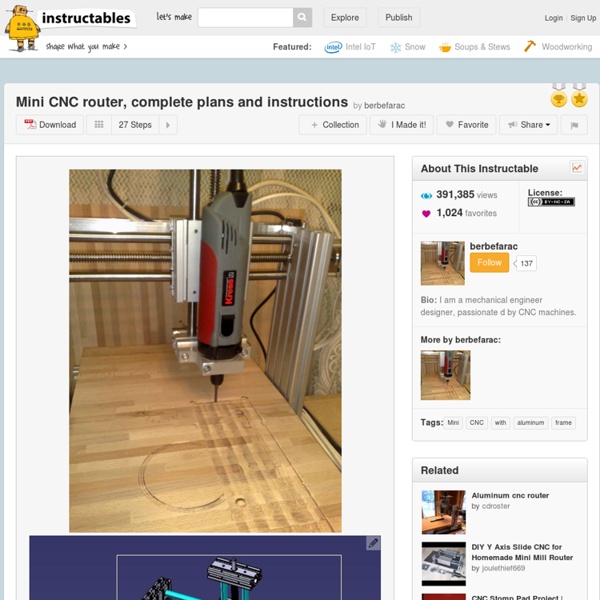



Flux 3D: A cheap, modular 3D scanner, printer and laser engraver A Taiwanese team has developed the Flux 3D, a cheap all-in-one 3D printer, scanner and laser engraver that, thanks to its modularity, also leaves room for further expansion. The device also allows users to create, share and download designs directly from their mobile devices and connect to the printer via Bluetooth for more convenient operation. View all It wasn't too long ago that buying your own personal 3D printer would set you back a small fortune. The $679 Flux picks up where these two left off, giving you arguably the best bang for your buck yet with a multi-purpose printer, scanner and laser engraver that's not only cheaper than the rest, but which can also be further augmented by adding separate modules as they are developed. To switch from printing to scanning, you simply remove the plastic base and expose the 1.3-megapixel CMOS sensor, which can be used to scan small objects as they sit on a rotating platform. The team's Kickstarter pitch video can be viewed below. Source: FLUX
3d printer kit : smartfriendz - SmartfriendzShop OpenBuilds Part Store Blog January 22nd, 2015 by bdring It’s ORD Camp time again this weekend. Every year I have done a gonzo build of some type of CNC machine. This year I only had a few hours to spare, so I wanted something simple. These are never meant to be practical machines, just conversation starters. This was hacked together and programmed in about two evenings with stuff I had laying around, but working at Inventables means there is a lot of cool stuff “laying around”. The stepper motors are driven with some high resolution stepper drivers. L = 150mmA = 90mm I have my CAM software output circles as multiple lines, so circles don’t need to be dealt with. Here are a few more pictures taken at this weeks Beer and Making session at Inventables. The shield has a solenoid driver that I was going to use for pen up, but I never got around to that. Here is a video of it running. A few people have asked if the motors could be moved to different locations. October 26th, 2014 by bdring September 11th, 2014 by bdring
FABtotum - Personal Fabricator The MakeSlide Project Amber Spyglass Ltd Amber Spyglass Ltd | Bootstrapping Your Inventivity Jonathan Keep, Self build Delta 3D printer Annoyed and frustrated by 3D Systems buying out and then stopping the production of the RapMan 3D printer. This was the first kit printer Belgian design duo Unfold adapted to print with clay and has subsequently been copied and widely used by others, I decided to develop my own replacement 3D printer. Based on the delta type of 3D printer my aim has been to use parts that can either be made with basic DIY tools and skills, or ordered off the internet. The design is specifically for printing in clay but could be adapted to work with other materials. This document is not a blue print for building a 3D printer but more my documentation of what I have done. Being more interested in what might be creatively produced with 3D printers I am happy to contribute openly to the growing knowledge based around clay and computerisation but it come with a warning.
Lasersaur Manual momus CNC | benchtop DIY router plans | home page BuildLog Coolant Flow Switch I bought this little thing to try to measure flow. I will need to make a circuit to convert the frequency to a go/no go signal for the power supply. add comments Setting up the laser beam. Cooling. Beam divergence. Mirror Alignment. Lens. Focusing: My lens is a 55mm focal length. Smoke: I cut a lot of lines and circles in wood. First Smoke! First Smoke!!! Mounting. Cooling: I hooked up the tube to the water supply. Power Supply: The power supply came with a red positive lead. A made a temporary manual control panel. First Test: I dialed the pot down as far as it would go and pushed the button. Successful shipment!!! The tube made it from Shanghai to me in 3 days. Waiting for a tube. I ordered a tube from LightObject way back in early August. Anyway, I ordered a new tube from love-happyshopping from eBay. Tube #1 Tube #2 Assembly This build this has been a two steps forward, one step back type project. The four corner threaded shaft assemblies were put together and installed.
Crawlbot The Printrbot Crawlbot is a CNC router that cuts 4’x8′ material, yet occupies a small footprint in your garage. The Crawlbot recently won “Best Large Format CNC” in Make Magazine’s 2015 Digital Fabrication Shootout. Out of the box, the Crawlbot cuts 40″ x 80″ out of a 4’x8′ sheet of plywood. We will provide the file to make your own table that extends the capabilities of the Crawlbot to fully cut an entire 4’x8′ sheet of plywood with no waste. A few things to know about the The Crawlbot before you buy: The Crawlbot is a CNC router intended to cut wood and plastic. Technical Specifications: Model: 1509Construction: Powder coated steel and aluminum bodyBelt & Pulleys: HTD5Footprint: Standing up for storage 15″ x 11″Overall Dimensions: 72″ x 17″ x 21″ (L x W x H)Cut Area: 4′ x 8′ (Initially 3′ x 7′, until you cut your own table)Initial Setup: Mount your router.Install your belts and tensioners.Install your software.Click here for getting started info for your Crawlbot. Includes: Shipping:
CowTech Ciclop Open Source 3D Scanner